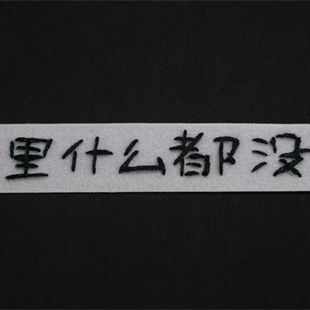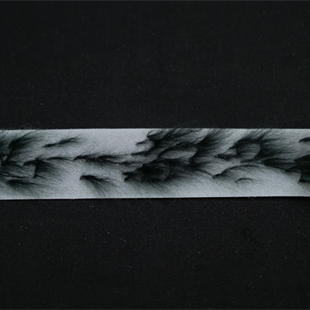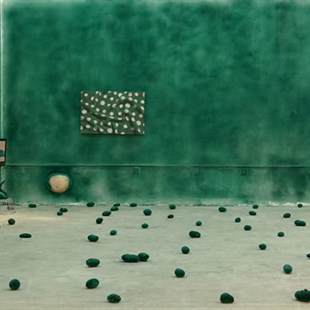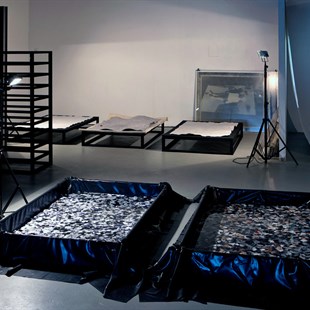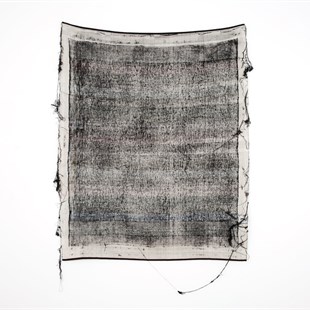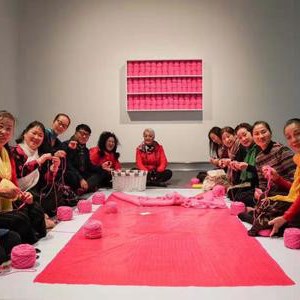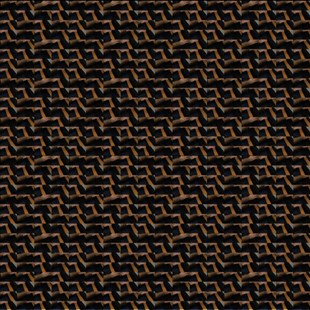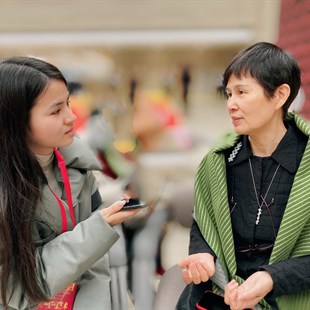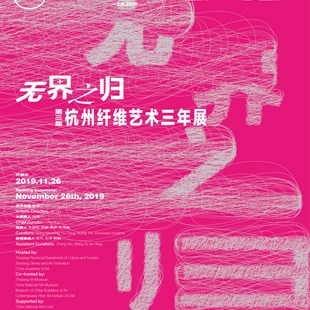Nowadays, fiber art still requires some interpretation. This is not only because of the confusion caused by the interpretation of fiber art using foreign vocabulary, but also because the concept and boundary of fiber are constantly expanding, which has caused some misunderstandings for the audience.
After nearly two years of intensive preparations, “Boundless Encounters”, 2019 Third Hangzhou Triennial of Fiber Art recently opened at the Zhejiang Art Museum. The exhibition showcases artworks covering a wide range of media, including installation, audible art, light art, computer art, and works featuring on-site participation and interaction. The specific problems that exhibits are targeted to include, in addition to the experiments on fiber art, the global localization issues, female issues, ecological crisis, consumer society, popular culture, and sociological interventions of specific social groups which are also connected by fiber art.1
The boundary issues aroused by “fiber art” and related topics raised by the exhibition became our focus.
The triennial was started by Chinese artist Lin Yi’s video of performance “There’s Nothing Here”. The subject of this 6’44’’ work is a tape-stitched embroidery with 7 Chinese characters. The behavior is to continuously pull the velcro with a sub-belt of velcro. After repeated cycles, the large characters on the velcro finally blur into the original line of needlework. Audiences who are familiar with the logic of contemporary art concepts will soon realize the semantic connotation of Lin’s work—“There’s nothing here” is a paradox between “is” and “isn’t”, and a contradiction that the “word” of languages couldn’t fully convey the “meaning” of materials.
As a fiber art exhibition, such visual works obviously cannot satisfy the spectators’ reading psychology. Following the path of the exhibition, we then find Ying Xinxun’s latest creation, “Velvet” Project: Inaccurate Good Life in 2019. In the space constructed by the artist using artificial velvet, it is as large as a picture frame on the wall and as small as a pair of scissors that are wrapped in velvet, and you can’t help but want to explore each item, but no matter which one is near, the audience will be prompted with a sense of unrealism. If you are willing to continue to look for it, you will stumble on little green potatoes which give us another hint: this is not the reality of life. The work of artist Wu Wei has produced animal fur textures over a long period of time on overlapping papers, creating a visual intuition for the viewers. The concepts in the work are conveyed through the artist’s handy materials.
If you just walk around, it is clear that you cannot get the real intention conveyed by “Paper Memory” by the Dutch artist Aimee Zito Lema. The artist retrieves the images of the 1979-1984 revolution and guerrilla movement that were deleted from the Argentine archives, and repeats them through behavioral images and field installations in an attempt to reproduce people’s memories and trauma. A similar way of replicating historical experience also appeared in Zhang Keduan’s “Talking to My Father”. The artist was inspired by Celine Dion’s “Dance with My Father”, using a piece of white cotton and the same color cotton thread starting from the beginning of the embroidery in contrast to the Diamond Sutra, if the artist does not explain, the audience will obviously not be able to understand the work which is like a densely quilted cotton cloth.
In art history we are familiar with, since Duchamp put the label “Spring” on the urinal and put it on display in the art gallery in 1917, the art world has begun to experience a contemporary turn from modernism to postmodernism, which was originally limited to exploring the expressions of language and technique in the art category, then it began to turn to contemporary art that borrowed cultural resources to translate, rewrite and reinterpret it. What the artist has created, the artist’s personality is no longer the focus, and the medium chosen by the artist, why he chose this medium and the meaning behind it has become an important explanatory text for contemporary art. Since then, contemporary art has gradually developed into mainstream conceptual art expressed through media such as video, installation, and performance. Obviously, all the works mentioned above have the full sense of the contemporary and conceptual meaning in terms of the form and content of the works.
This caused a certain degree of confusion for the viewers. In such an interpretive logic, we need to revisit the question: “What is fiber art?”
II
Regarding what “fiber art” is, presumably “textile” is the psychological answer for most spectators.
But this is far from the truth. At the fiber exhibition site, we can see several pieces of textile art, such as the superhero series of clothing of American artist Mark Newport, and he continues to deepen the emphasis on textile materials, textures and clothing forms to convey his own ideas, he said: “My hand knit acrylic re-creation of these heroes’ costumes combine their heroic, protective, ultra-masculine, yet vulnerable personas with the protective gestures of my mother, hand knit acrylic sweaters meant to keep me safe from New England winters.” Another American artist John Paul Morabito unabashedly acknowledges that he is a weaving artist, but he defines the loom as a path to the vast world, and in his work “Frottage”, he has personally woven fabrics and then made digital prints through digital scanning. In his view, in this way, the work has become a form of expression between tradition and revelation. Obviously, these works have escaped the traditional textile arts’ focus on materials and craftsmanship, and turned to deeper thinking about psychological and social development.
Fiber art is not only “textile art”. Following questioning and emphasis, we opened the evolution of the concept of “fiber art”. Before the end of the 20th century, the word “Fiber Art” was not included in the Chinese dictionary. It first appeared in the United States. But fiber art is not a global concept. European countries have always called “fiber art” as “textile art” because of their focus on the history of their industrial revolution. In the 1990s, Lin Lecheng, a young teacher who taught in the Dyeing and Weaving Department of the Central Academy of Craft Art, proposed to establish the International Modern Fiber Art Exhibition “From Lausanne to Beijing” after returning home from a study tour in Europe. After discussion, the exhibition continued to use the term “fiber art” introduced from the United States, but its English translation was still “Tapestry Art”. It wasn’t until 2004 that the third edition of the Fiber Triennial was changed to “Fiber Art” in English.
More than ten years after the term “fiber art” and the launch of the fiber art exhibition, a fiber art exhibition was also held in the silk capital of Hangzhou, but its history can be dated back to the 1980s. In 1953, 21-year-old Wan Man (formerly known as Maryn Varbanov) came to China to study and he studied at Peking University, Central Academy of Fine Arts, and Central Academy of Craft Art. After moving to Paris in 1975, he was invited to teach at Zhejiang Academy of Fine Arts in 1986 (the school was renamed after China Academy of Art in 1993) and established the “Wan Man Tapestry Art Institute”.
Shi Hui, the Director of Hangzhou Triennial of Fiber Art, a student of Professor Wan Man, and a professor of China Academy of Art, introduced the original intention of the institute to look at fiber art from the perspective of the whole art history. She introduced that Professor Wan Man hoped that the teachers in China, including Chinese painting, oil painting, printing and carving, would come to the institute for an exchange which should not be limited to dyeing, weaving and arts and crafts. In this regard, the development from Lausanne to Beijing: International Fiber Art Exhibition with a professional background in the Central Academy of Craft Art is following a completely different development direction, the latter focuses on cultivating new arts and crafts in design education that encourages originality, thus practitioners transform from industry technicians to artists. 2
Without understanding this historical background information, it is obviously difficult to understand the Hangzhou Triennial of Fiber Art. On the other hand, the misunderstanding brought to the audience by the Triennial is more directly related to the concept of “fiber” and “fiber art”. The work “Weaving Kiosk at Boundless Encounters: The Third” by the Danish artist Rosa Tolnov Clausen for this exhibition expresses her own attempt to expand the art of fiber. The artist believes: “Superficially, in view of its materiality, tools, rhythms, hand weaving may appear as an activity more anchored in the past, but through various participatory installations I have conducting since 2013 I have seen that also in our digital present-day society, people are drawn to this activity for reasons acute to their lives, beyond the physical making.”
Artists participating in the Hangzhou Triennial of Fiber Art may adhere to the weaving behavior, but they convey ideas through media such as performance, video, and installation, such as the work “Archivo Nativo” by artist Carolina Estrada; Or go deeper into the fiber gene and track the social and economic issues brought about by fiber, such as the work of Indian artist N.S. Harsha’s “Nations” and so on.
Strictly speaking, these works do not seem to be called fiber art anymore, but they are related to fiber: the material connection or the contextual connection behind the materials. So, can we call it a contemporary art exhibition? Shi Hui did not object to this question in an exclusive interview with CAFA ART INFO, but pointed out the connection to the role of fiber art. She believes that “this is not an exhibition of contemporary fiber artists, but an exhibition of fiber art. As long as the artist chooses fiber as a material, or thinks from the perspective of fiber and fabric, we can call it a fiber art work.”
This refers to a “border” issue. When the boundary of fiber art expands into the scope of contemporary art, will the concept of fiber art be dispelled? This is also the issue that the Third Hangzhou Triennial of Fiber Art is trying to explore. Shi Hui believes that at this point, we are required to constantly reflect and review after constantly breaking the boundaries and return to the relationship between fiber weaving and structure. Examining the relations between fiber and human body, fabric and human survival, this exhibition is actually exploring breakthroughs and persistent thinking.
III
Those who are familiar with the contemporary art circle, if they read the list of participating artists, it is not difficult to find that artists N.S. Hasa, Chiharu Shiota, Yin Xiuzhen, Hu Yinping, and Xing Danwen are all artists who have a place in the field of contemporary art. Therefore, the shortlisting for the Triennial is due to the fibrous nature of their works. In terms of their identities, artists should indeed be classified as contemporary artists. But inviting them to jointly exhibit works with fiber characteristics, does not only show the use of fiber materials in the field of contemporary art, but it also indicates the expanded multidimensional boundary problem from the perspective of fiber art.
In addition to being used as decoration and materials, the material quality of fiber and its natural connection with humans, coupled with the in-depth thinking in society, seem to have already shown its wider contact with social life in the future. From this point, fiber art does not have its own boundary problem, that is, there is no boundary between fiber art and contemporary art.
The exhibition invited Mr. Feng Boyi, a senior curator in the field of contemporary art, as the main curator. With the theme of “Boundless Encounters”, he tried to open a broader exploration of fiber art into contemporary art. In the official press release given by the exhibition, the theme of the exhibition “Boundless Encounters” refers to the transboundary creations of fiber art, which is not limited by boundaries, which means that the interdependence of fiber art in the context of globalization is detached from the real world and crosses the unknown border and continues to experiment. Feng Boyi pointed out in an interview that although the “Triennial of Fiber Art” is a themed exhibition with prescriptive material properties, they hope that the exhibition will break the traditional perception of fiber and be more open and experimental. He also believes that, “Art has no boundaries, and even art has no bottom line. If there is a boundary, there is a bottom line; it is actually a form of self-binding and self-limitation.”
Feng Boyi seems to have grasped the gist of the relation between fiber art and contemporary art. In his view, there is no boundary within art, so the curatorial logic of this exhibition curated by him is still based on the curatorial logic of a contemporary art exhibition: After the theme was determined, the artists are invited to join in different sections according to different content.
Professor Peng Feng from Peking University pointed out when discussing the boundaries of art: “Challenging definitions and boundaries is the nature of art. Even if we define or draw boundaries for art, we cannot ensure that they will continue to be effective tomorrow because they might inspire new challenges for artists.” 3 Can fiber art be incorporated into contemporary art? Obviously, the answer to this question is yes. This is a question of expanding artistic boundaries, and it is constantly inspiring new creations and experiments by artists.
Since modern art, the boundaries of traditional art have been continuously expanded through multiple media which means that such as installation, performance, and video, form a large-scale contemporary cross-border performance scene. In the future, with the development of science and technology, the continuously regenerated fiber material will continue to exceed the boundaries, “in fact, it presents a microcosm of contemporary art beyond the boundary.” 4
Text by Yang Zhonghui, edited and translated by Sue/CAFA ART INFO
Photo Courtesy of the Organizer.
References:
1 Press release of 2019 Third Hangzhou Triennial of Fiber Art;
2 New Appeals of Fiber Art in New Age, Seminar on the 10th “International Modern Fiber Art Exhibition “From Lausanne to Beijing”, Decoration, Volume 3, 2019;
3 Peng Feng, “The Loss and Gain of Artistic Boundary”, Journal of Peking University(Humanities and Social Sciences), Volume 6, 2016;
4 Boundless Encounters: 2019 Hangzhou Triennial of Fiber Art, Zhejiang People’s Fine Arts Publishing House, 2019;


